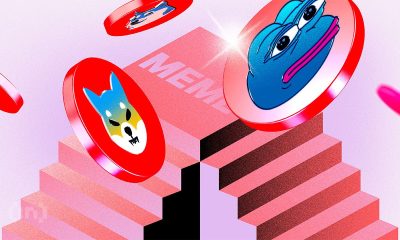Market
Elon Musk Triggers Dogefather Token Rally With Latest Post

Elon Musk, CEO of Tesla and SpaceX, has sparked a dramatic surge in Dogefather-themed tokens with his latest post on X (formerly Twitter).
Musk’s posts, particularly those mentioning meme coins or his nicknames, frequently spark considerable attention on social media, owing to his extensive following and strong influence within the crypto community.
Musk Triggers Dogefather Price Rally
Musk posted an image of himself on X, holding a chainsaw with the text “The Dogefather” prominently displayed in the background.
“This is a real picture,” the caption read.
The term “Dogefather” is a long-standing nickname for Musk in the cryptocurrency community. It is a playful reference to his connection with Dogecoin (DOGE). This nickname gained traction when Musk appeared on Saturday Night Live (SNL) in 2021, where he referred to himself as the “Dogefather.”
Following Musk’s latest post, multiple tokens branded with the Dogefather name experienced an explosive rally. The Dogefather (DOGEFATHER) token surged by 122%. At press time, it traded at $0.0015, marking its highest price since late January 2025.

Additionally, The DogeFather (DOGEFATHER) also rose by triple digits. Its 137% rise pushed its trading price to $0.0040. The rally didn’t stop there. Several other similarly themed tokens also saw price spikes. Moreover, opportunistic developers even launched new Dogefather-named tokens that skyrocketed in value within hours of their creation.
Meanwhile, this isn’t the first time Musk’s social media activity has moved markets. Previously, when he changed his username to “Kekius Maximus” and “Harry Bōlz,” the associated tokens saw massive gains.
Likewise, in late January, DOGE saw a notable surge after the US Department of Government Efficiency prominently displayed the meme coin’s logo on its official homepage.
President Milei Gifts Chainsaw to Musk
Despite the price impact, it’s important to note that the image in question was, in fact, digitally altered. The original picture was from the Conservative Political Action Conference (CPAC) on February 20, 2025, where Musk made an appearance.
According to reports from the BBC, the real event featured Argentine President Javier Milei presenting Musk with an ornate chainsaw as a symbolic gesture.
“This is the chainsaw for bureaucracy,” Musk said.
This gesture is said to be linked to Musk’s work with the Department of Government Efficiency (DOGE), a role he holds under the Donald Trump administration. Musk has been working to cut US government spending and reduce the federal workforce.
Previously, Milei has often used a chainsaw as a prop in public appearances in Argentina to symbolize his reduction of government expenditures.
Disclaimer
In adherence to the Trust Project guidelines, BeInCrypto is committed to unbiased, transparent reporting. This news article aims to provide accurate, timely information. However, readers are advised to verify facts independently and consult with a professional before making any decisions based on this content. Please note that our Terms and Conditions, Privacy Policy, and Disclaimers have been updated.
Market
How $31 Trillion in US Bonds Could Impact Crypto Markets in 2025

US Treasury plans to issue over $31 trillion in bonds this year—around 109% of GDP and 144% of M2. This would be the highest recorded level of bond issuance in history. How will it impact the crypto market?
Heavy supply may push yields higher, as Treasury financing needs outstrip demand. Higher yields increase the opportunity cost of holding non‑yielding assets like Bitcoin and Ethereum, potentially drawing capital away from crypto.
US Bonds Might Add to the Crypto Market’s Volatility
The whole narrative potentially boils down to foreign demand for US bonds. Overseas investors hold roughly one‑third of US debt.
Any reduction in appetite—whether due to tariffs or portfolio rebalances—could force the Treasury to offer even steeper yields. Rising yields tend to tighten global liquidity, making risk assets like cryptocurrencies less attractive.
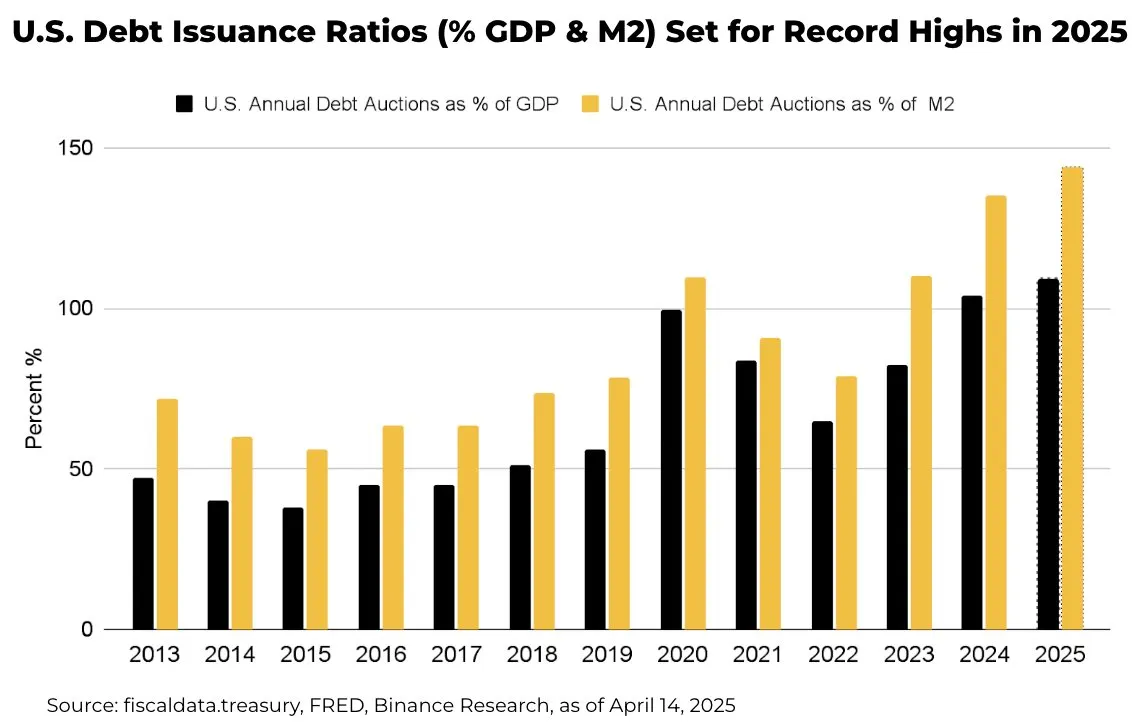
When yields climb, equities and crypto can face selling pressure. For example, during the 2022 bond sell‑off, Bitcoin fell more than 50% alongside Treasury yields spiking. A repeat scenario could test crypto’s appeal.
Meanwhile, the US dollar’s strength could compound headwinds. As yields rise, the dollar typically gains. A stronger dollar makes Bitcoin’s USD‑denominated price more expensive for overseas buyers, dampening demand.
Yet crypto offers unique attributes. In periods of extreme monetary expansion, such as post‑pandemic, investors turned to Bitcoin as an inflation hedge.
Even if higher yields curb speculative flows, crypto’s finite supply and decentralized nature may sustain a baseline of buyer interest.
Technically, Bitcoin’s correlation to yields may weaken if Treasury issuance triggers broader macro volatility. When bond markets are hit by trade or fiscal policy shocks, traders may turn to digital assets to diversify since they don’t move in step.
However, that thesis hinges on continued institutional adoption and favorable regulation.
Crypto’s liquidity profile also matters. Large bond sales often drain bank reserves—tightening funding markets.
In theory, tighter liquidity could boost demand for DeFi protocols offering higher yields than traditional money markets.
Overall, record US debt supply points to higher yields and a stronger dollar—volatility for crypto as a risk asset.
Yet crypto’s inflation‑hedge narrative and evolving technical role in diversified portfolios could temper volatility. Market participants should watch foreign demand trends and liquidity conditions as key indicators for crypto’s next moves.
Disclaimer
In adherence to the Trust Project guidelines, BeInCrypto is committed to unbiased, transparent reporting. This news article aims to provide accurate, timely information. However, readers are advised to verify facts independently and consult with a professional before making any decisions based on this content. Please note that our Terms and Conditions, Privacy Policy, and Disclaimers have been updated.
Market
Are Ethereum Whales Threatening ETH Price Stability?

Ethereum (ETH) continues to struggle below the $2,000 mark, a level it hasn’t reclaimed since March 28, as bearish momentum lingers across both technical and on-chain indicators. Despite attempts to stabilize, recent data reveals rising concentration of ETH among whale wallets, alongside persistent weakness in trend indicators like EMA lines.
At the same time, retail and mid-sized holders are gradually losing share, further skewing ownership toward large players. This combination of declining retail participation and heavy whale dominance may leave ETH increasingly vulnerable to sharp corrections if sentiment turns.
ETH Whale Holdings Hit 9-Year High, Raising Centralization Concerns
The amount of ETH held by whale addresses—wallets controlling more than 1% of the total circulating supply—has reached its highest level since 2015, sitting at 46%.
This marks a significant shift in Ethereum’s ownership data, as whales surpassed the holdings of retail investors back on March 10 and have continued to grow their share since. In comparison, investor-level addresses, which hold between 0.1% and 1% of supply, and retail wallets, which hold less than 0.1%, have both seen declines in their share of ETH.
The jump from 43% to 46% in just a few months reflects a sharp accumulation trend among the largest holders, suggesting a growing concentration of ETH in fewer hands.

Whales typically represent institutional investors, funds, or early adopters, and their behavior can significantly impact price due to the volume they control. Investor-level addresses often reflect high-net-worth individuals or smaller institutions, while retail addresses include everyday traders and holders.
While some might see the rise in whale holdings as a vote of confidence, it also increases the risk of sudden volatility if large holders begin offloading.
With retail and investor participation shrinking, the market may become more fragile and vulnerable to sharp, unexpected price movements driven by a few dominant players.
Whales Holding 1,000 to 100,000 ETH Now Control $59 Billion
Analyzing the ETH Holdings Distribution Matrix reveals concerning signs of deepening concentration.
When excluding addresses with over 100,000 ETH—typically linked to centralized exchanges—whale addresses holding between 1,000 and 100,000 ETH now control roughly $59 billion in ETH, representing around 25.5% of the circulating supply.
This group has steadily accumulated more of the network’s supply, reinforcing a power shift toward large entities operating outside of exchanges but still commanding immense influence over the market. Recently, Galaxy Digital moved $100 million in Ethereum, raising questions about whether it was a strategic shift or a sell-off signal.
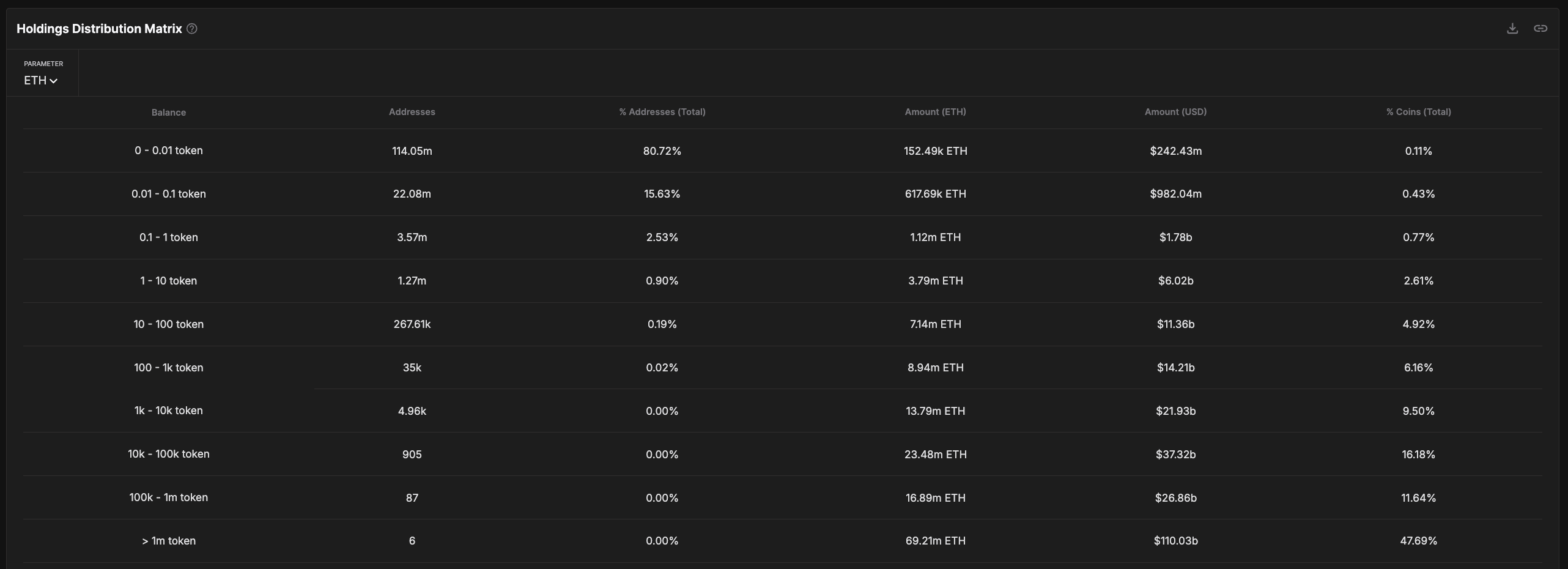
While some might interpret this trend as strategic positioning by confident holders, it also exposes Ethereum to significant downside risk.
With over a quarter of supply concentrated in the hands of these whales, any coordinated or panic-driven selling could trigger sharp price drops, especially in an environment with weakening retail participation.
Rather than a sign of long-term stability, this level of concentration may make the ETH market increasingly fragile and prone to volatility if these holders start to rotate their capital to other assets.
Bearish EMA Structure Keeps ETH Under Pressure
Ethereum’s EMA lines continue to flash bearish signals, with short-term averages still positioned below the long-term ones—indicating downward momentum remains in play.
If a new correction happens, Ethereum could first test support at $1,535. A breakdown below that level opens the door to deeper declines toward $1,412 or even $1,385.
Should these supports also fail to hold, Ethereum would edge dangerously close to the $1,000 mark, a level some analysts have flagged as a potential downside target in the event of an extended market correction.

Still, a bullish reversal is not entirely out of the question. If buying pressure returns and Ethereum reclaims short-term momentum, it could test the resistance level at $1,669.
A breakout above that would be a significant technical signal, potentially pushing Ethereum price toward $1,749 and even $1,954.
However, with EMAs still tilted to the downside, the burden remains on bulls to prove that momentum has shifted decisively in their favor.
Disclaimer
In line with the Trust Project guidelines, this price analysis article is for informational purposes only and should not be considered financial or investment advice. BeInCrypto is committed to accurate, unbiased reporting, but market conditions are subject to change without notice. Always conduct your own research and consult with a professional before making any financial decisions. Please note that our Terms and Conditions, Privacy Policy, and Disclaimers have been updated.
Market
CZ’s Plan to Streamline BNB Staking Could Boost DeFi
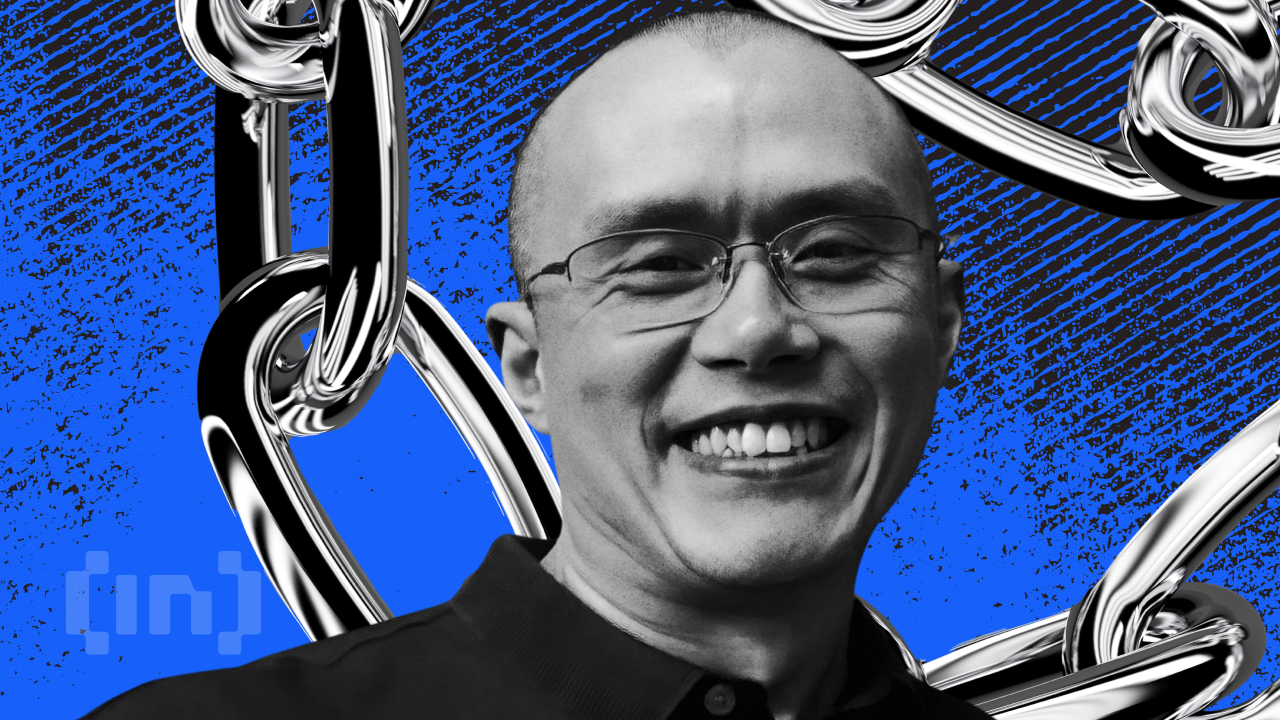
On Friday, Changpeng Zhao (CZ) sparked fresh momentum toward simplifying the BNB staking ecosystem.
The Binance founder proposed the unification of multiple liquid staking tokens into a single, streamlined structure.
CZ’s Bold Plan to Unify BNB’s Staking Maze
Changpeng Zhao’s comments come amid rising concerns over the fragmentation of BNB staking products. Their impact on user adoption and capital efficiency within the decentralized finance (DeFi) space has also been questioned.
“There are so many different versions of BNB rewards. asBNB, slisBNB, clisBNB… combine them?” CZ wrote on X (Twitter).
These tokens, each tied to a different platform or crypto staking strategy, represent staked BNB assets while allowing users to remain liquid.
However, the proliferation of variant tokens like asBNB, slisBNB, and clisBNB has created operational barriers for users, particularly newcomers. Each derivative often carries reward structures, lock-up conditions, and platform-specific limitations, making it harder to maneuver the ecosystem.
This highlights the growing problem in BNB’s liquid staking ecosystem. However, as more derivatives emerge, confusion has mounted. The call for consolidation follows recent activity in the BNB DeFi ecosystem. This week, Aster DEX (decentralized exchange) announced “back-to-back rewards” for asBNB holders.
While this added to the mix of incentives, it also highlighted the complexity of managing multiple tokens.
“INIT rewards are loading now and will be available for holders with previous rewards soon,” Aster posted.
The post demonstrates how derivative-specific reward systems may confuse users who are unfamiliar with each staking product’s nuances.
CZ shared a follow-up post, urging users to support projects in the ecosystem. The call to action reflects his commitment to nurturing BNB’s DeFi growth, albeit with a more coherent strategy.
As Binance aims to maintain its leadership in Web3 usability, Zhao’s suggestion to unify these staking derivatives could be a pivotal move to streamline BNB’s functionality across DeFi platforms.
BNB remains one of the most utilized assets in the DeFi ecosystem. The network underpins a wide array of liquidity pools, staking protocols, and yield-generating strategies.
CZ’s unification proposal aligns with a broader trend across DeFi to improve composability and standardization. Industry leaders increasingly recognize that overly complex or siloed token designs can deter participation and limit interoperability.
A standardized BNB staking token could help reduce fragmentation and boost liquidity. It could also encourage deeper integration across platforms using BNB Chain infrastructure.
While Binance has not yet issued an official roadmap for staking token consolidation, CZ’s comments may hint at a coming initiative to build a unified liquid staking standard.
Such a move could further solidify BNB’s position as a core DeFi asset, simplify staking for everyday users, and drive broader adoption of Binance’s on-chain ecosystem.

BeInCrypto data shows BNB was trading for $591.72 as of this writing, up by a modest 0.72% in the last 24 hours.
Disclaimer
In adherence to the Trust Project guidelines, BeInCrypto is committed to unbiased, transparent reporting. This news article aims to provide accurate, timely information. However, readers are advised to verify facts independently and consult with a professional before making any decisions based on this content. Please note that our Terms and Conditions, Privacy Policy, and Disclaimers have been updated.
-

 Market23 hours ago
Market23 hours agoOver $700 Million In XRP Moved In April, What Are Crypto Whales Up To?
-

 Altcoin23 hours ago
Altcoin23 hours agoCZ Honors Nearly $1 Billion Token Burn Promise
-

 Market22 hours ago
Market22 hours agoCrypto Casino Founder Charged With Fraud in New York
-

 Ethereum20 hours ago
Ethereum20 hours agoEthereum Whales Offload 143,000 ETH In One Week – More Selling Ahead?
-

 Market13 hours ago
Market13 hours agoEthereum Price Fights for Momentum—Traders Watch Key Resistance
-

 Market19 hours ago
Market19 hours agoCrypto Ignores ECB Rate Cuts, Highlighting EU’s Fading Influence
-

 Altcoin13 hours ago
Altcoin13 hours agoExpert Predicts Pi Network Price Volatility After Shady Activity On Banxa
-
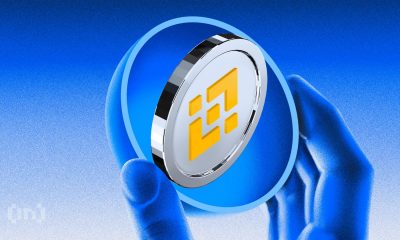
 Market18 hours ago
Market18 hours agoBinance Leads One-Third of the CEX Market in Q1 2025



